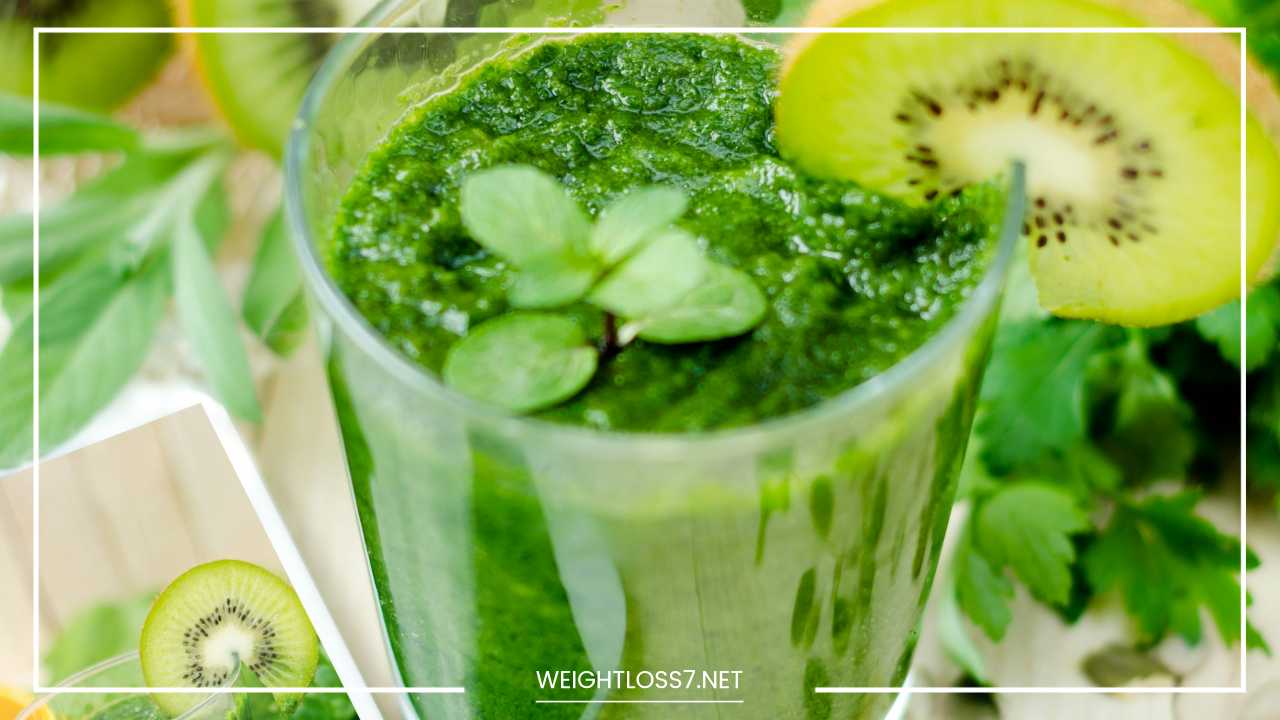Getting Healthy: Your Guide to a Sustainable Lifestyle

Getting Healthy
Getting Healthy: A Journey, Not a Destination
“Getting healthy” – it’s a phrase we hear constantly, yet it can feel overwhelming and shrouded in mystery. Images of chiseled abs and kale smoothies might pop into your head, leaving you wondering where to even begin.
But here’s the truth: getting healthy isn’t a one-size-fits-all race to the finish line. It’s a personal journey filled with exploration, self-discovery, and a whole lot of delicious food (yes, you read that right!).
This blog post is your roadmap to navigate that journey. We’ll debunk myths, explore different approaches, and equip you with practical tips to create a sustainable, healthy lifestyle that works for YOU.
Why Get Healthy?
Let’s be honest, feeling good is pretty darn motivating. But the benefits of getting healthy extend far beyond just fitting into your favorite jeans (although that’s a perk!). Here’s a glimpse of what awaits you:
- Increased Energy Levels: Say goodbye to afternoon slumps! Eating nutritious foods and staying active fuels your body and mind, leaving you feeling energized throughout the day.
- Improved Sleep Quality: A healthy lifestyle promotes restful sleep, which is crucial for physical and mental well-being. You’ll wake up feeling refreshed and ready to tackle the day.
- Boosted Immunity: A strong immune system is your body’s defense against illness. Making healthy choices helps your body fight off infections and stay healthy.
- Reduced Risk of Chronic Diseases: Eating a balanced diet, exercising regularly, and managing stress can significantly reduce your risk of developing chronic diseases like heart disease, diabetes, and some cancers.
- Enhanced Mood and Mental Wellbeing: Exercise releases endorphins, natural mood-boosters that can combat stress, anxiety, and even depression. Leading a healthy lifestyle can leave you feeling happier and more optimistic.
- Increased Confidence: When you feel good in your own skin, it shows! Taking charge of your health can boost your confidence and self-esteem.
Ditch the All-or-Nothing Mindset
Let’s address a common misconception: getting healthy isn’t about drastic changes or overnight transformations. It’s more like building a brick wall – each healthy choice you make is a brick, and over time, you build a solid foundation for a healthy lifestyle.
Here’s why the all-or-nothing approach backfires:
- It’s unsustainable: Trying to overhaul your life overnight is a recipe for burnout. Start with small, achievable goals and gradually build from there. For example, instead of vowing to never eat dessert again, aim to have it just once a week.
- It breeds guilt: If you slip up one day and devour a slice of cake (it happens!), don’t beat yourself up. Just get back on track with your next healthy meal.
- It creates resistance: Depriving yourself of all your favorite foods is a surefire way to crave them even more. Focus on making healthy choices most of the time, and allow yourself occasional treats.
Finding Your Healthy Path
There’s no single path to health that works for everyone. What motivates one person might not resonate with another. Here are some popular approaches to getting healthy:
- Focus on Nutrition: Dive into the world of whole, unprocessed foods. Fill your plate with fruits, vegetables, whole grains, lean protein, and healthy fats. Explore different cuisines and discover healthy recipes that tantalize your taste buds. Here are some resources to get you started:
- Meal planning apps: These apps can help you create healthy meal plans based on your dietary preferences and calorie goals.
- Cooking classes: Take a cooking class to learn new skills and discover healthy recipes you’ll love.
- Meal prepping: Dedicate a specific time each week to prepping your meals for the week ahead. This can save you time and ensure you have healthy options readily available.
- Embrace Movement: Find an activity you genuinely enjoy, whether it’s dancing, swimming, hiking, or even a brisk walk in the park. Exercise doesn’t have to be a chore – make it fun! Aim for at least 150 minutes of moderate-intensity exercise or 75 minutes of vigorous-intensity exercise per week. Here are some tips to get moving:
- Find a workout buddy: Having a friend to exercise with can help you stay motivated and accountable.
- Explore different activities: There are endless ways to get active. Try a new fitness class, join a sports team, or simply dance around your living room.
- Start small: If you’re new to exercise, begin with shorter workouts and gradually increase the duration and intensity as your fitness improves.
- Mind-Body Connection: Don’t neglect your mental well-being. Activities like yoga, meditation, or spending time in nature can help manage stress, improve focus, and promote overall health. Here are some ways to incorporate mind-body practices into your routine:
- Meditation apps: There are many meditation apps available that can guide you through mindfulness exercises.
- Yoga classes: Yoga combines physical postures, breathing exercises, and meditation for a holistic approach to well-being.
- Spending time in nature: Immerse yourself in the calming effects of nature. Go for a walk in the park, hike in the woods, or simply sit outside and soak up the sunshine.
- Prioritize Sleep: Aim for 7-8 hours of quality sleep each night. Develop a relaxing bedtime routine and create a sleep-conducive environment. Here are some tips to improve your sleep hygiene:
- Establish a regular sleep schedule: Go to bed and wake up at the same time each day, even on weekends.
- Create a relaxing bedtime routine: Take a warm bath, read a book, or listen to calming music before bed.
- Optimize your sleep environment: Make sure your bedroom is dark, quiet, and cool.
- Limit screen time before bed: The blue light emitted from electronic devices can disrupt your sleep cycle.
- Build a Support System: Surround yourself with positive and supportive people who encourage your healthy lifestyle choices. This could include family, friends, a workout buddy, or even a health coach.
Remember: There’s no one-size-fits-all approach. Experiment and find what works best for YOU. Listen to your body, track your progress, and celebrate your achievements along the way.
Making Healthy Choices Easy
Sometimes, the biggest hurdle to getting healthy is simply fitting it into our busy lives. Here are some practical tips to make healthy choices easier:
- Plan your meals and snacks: This will help you avoid unhealthy impulse purchases when you’re hungry.
- Prep healthy snacks in advance: Having healthy snacks readily available will prevent you from reaching for unhealthy options when cravings strike.
- Cook at home more often: This gives you control over the ingredients in your meals.
- Pack your lunch: Bringing your lunch to work ensures you have a healthy option readily available.
- Read food labels: Pay attention to portion sizes, calorie content, and ingredients when choosing packaged foods.
- Find healthy alternatives: There are healthy substitutes for many of your favorite indulgences. For example, try baked sweet potato fries instead of regular fries, or use Greek yogurt instead of sour cream.
- Stay hydrated: Drink plenty of water throughout the day to stay energized and support overall health.
- Manage stress: Chronic stress can wreak havoc on your health. Find healthy ways to manage stress, such as yoga, meditation, or spending time in nature.
Building Sustainable Habits
Getting healthy is a marathon, not a sprint. Here’s how to turn your healthy choices into lasting habits:
- Set SMART goals: Specific, Measurable, Achievable, Relevant, and Time-bound goals are more likely to be achieved.
- Start small: Don’t overwhelm yourself with too many changes at once. Begin with small, achievable goals and gradually build from there.
- Focus on progress, not perfection: There will be setbacks along the way. Don’t let them derail your progress. Just get back on track with your next healthy choice.
- Make it enjoyable: Find activities and healthy foods that you genuinely enjoy. This will make it easier to stick with your healthy lifestyle in the long run.
- Reward yourself: Celebrate your achievements along the way. This will help you stay motivated and on track.
- Find an accountability partner: Having someone to hold you accountable can be a great motivator.
Remember, You Got This!
Getting healthy is a journey of self-discovery and empowerment. It’s about feeling good in your own skin and taking charge of your well-being. Don’t be discouraged by setbacks – they’re a normal part of the process.
With dedication, self-compassion, and the tips outlined above, you can create a healthy lifestyle that works for YOU and empowers you to live your best life.
Beyond the Basics: Exploring Different Dietary Approaches
While a focus on whole, unprocessed foods forms the foundation of a healthy diet, there are various dietary approaches that can cater to specific needs and preferences. Here’s a glimpse into some popular options:
- The Mediterranean Diet: Emphasizes fruits, vegetables, whole grains, legumes, fish, and healthy fats like olive oil. This heart-healthy diet is linked to numerous health benefits, including reduced risk of heart disease, stroke, and diabetes.
- The DASH Diet: Designed to lower blood pressure, this diet focuses on fruits, vegetables, whole grains, low-fat dairy products, and lean protein sources. It limits saturated and trans fats, sodium, and added sugars.
- The Flexitarian Diet: A plant-based diet with occasional inclusion of meat, poultry, or fish. This approach allows for flexibility while encouraging a focus on fruits, vegetables, whole grains, and legumes.
- The Vegetarian Diet: Excludes all meat, poultry, and fish but allows for eggs and dairy products (lacto-vegetarian) or excludes all animal products (vegan). Vegetarians need to be mindful of getting enough protein, iron, vitamin B12, and calcium from plant-based sources.
- The Ketogenic Diet: A high-fat, low-carbohydrate diet that forces the body to burn fat for fuel (ketosis). While effective for weight loss in some cases, it’s important to consult with a healthcare professional before starting this diet due to potential side effects.
Remember: There’s no single “best” diet. The best approach is the one that you can stick with in the long term and that aligns with your health goals and preferences.
Addressing Common Challenges
Getting healthy comes with its own set of challenges. Here’s how to tackle some of the most common roadblocks:
- Lack of Time: Batch cooking on weekends or prepping ingredients in advance can save you time during the week. Utilize healthy frozen meals or pre-cut vegetables as shortcuts.
- Motivation Slump: Find an activity buddy or join a fitness class for added accountability. Track your progress and celebrate your achievements to stay motivated.
- Cravings: Don’t deprive yourself entirely of your favorite treats. Allow yourself occasional indulgences in moderation. Having healthy snacks readily available can help curb cravings for unhealthy options.
- Eating Out: Many restaurants offer healthy options. Research menus beforehand and choose dishes that align with your dietary goals.
- Travel: Pack healthy snacks and research healthy restaurants at your destination. Maintain your exercise routine with bodyweight workouts or hotel gyms.
Listen to Your Body
Getting in tune with your body’s signals is crucial for a sustainable healthy lifestyle. Here are some things to pay attention to:
- Hunger cues: Learn to distinguish between true hunger and boredom or emotional eating. Eat mindfully and stop when you’re comfortably full.
- Energy levels: If you’re constantly feeling fatigued, it might be a sign that your diet or exercise routine needs adjustments.
- Sleep quality: Pay attention to how you feel after a night’s sleep. If you’re consistently waking up tired, it could indicate sleep issues or a need to adjust your diet or exercise routine.
- Pain or discomfort: Don’t push yourself through pain during exercise. If you experience any discomfort, listen to your body and take a break.
Building a Healthy Relationship with Food
Food should be a source of nourishment and enjoyment, not guilt or stress. Here are some tips to cultivate a healthy relationship with food:
- Practice mindful eating: Pay attention to the taste, texture, and smell of your food. Savor each bite and eat slowly.
- Avoid emotional eating: Find healthy coping mechanisms for stress or boredom besides using food.
- Challenge negative thoughts: Don’t label foods as “good” or “bad.” All foods can fit into a healthy diet in moderation.
- Focus on intuitive eating: Learn to trust your body’s hunger and fullness cues. Eat when you’re hungry and stop when you’re satisfied.
Getting Help and Support
Don’t be afraid to seek help and support on your health journey. Here are some resources available:
- Registered Dietitians (RDs): RDs can provide personalized nutrition advice and help you create a healthy eating plan that aligns with your goals and preferences.
- Certified Personal Trainers: Personal trainers can create a safe and effective exercise program based on your fitness level and goals.
- Mental health professionals: Therapists can help you address stress, anxiety, or other mental health challenges that might be impacting your health goals.
Remember, getting healthy is a lifelong journey. It’s about progress, not perfection. By incorporating these tips and resources into your life, you can create a sustainable and enjoyable healthy lifestyle that empowers you to feel your best and live a fulfilling life.
Here are some additional thoughts to wrap things up:
- Be patient: Change takes time. Don’t get discouraged if you don’t see results overnight. Celebrate your small victories and focus on making gradual, sustainable improvements.
- Find joy in movement: Exercise shouldn’t feel like a chore. Find activities you genuinely enjoy, whether it’s dancing to your favorite music, hiking in nature, or playing a sport with friends.
- Make it a family affair: Encourage healthy habits in your entire household. Cook healthy meals together, go for family walks, or participate in active hobbies as a family.
- Embrace self-compassion: Be kind to yourself throughout your journey. There will be setbacks – that’s okay! Just pick yourself up and get back on track with your next healthy choice.
- Focus on the positive: Getting healthy is about feeling good! Pay attention to how much better you feel physically and mentally as you make healthy choices.
Remember, you are the driver of your own health journey. Take charge, embrace exploration, and enjoy the process of becoming the healthiest and happiest version of yourself!

















